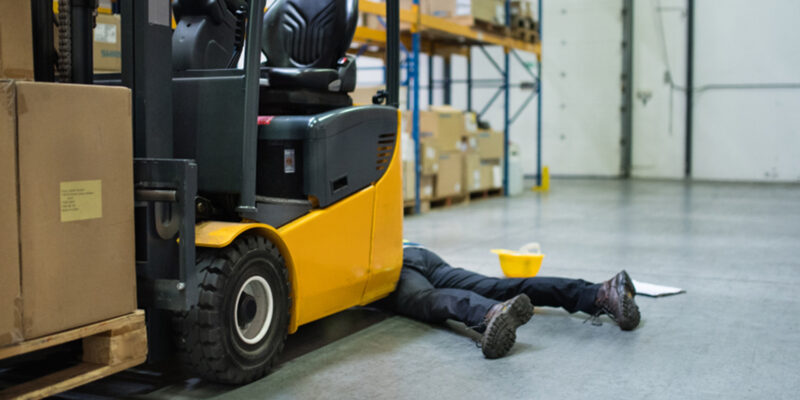Forklifts are among the most frequently used equipment in warehouses or manufacturing units across the globe. However, accidents related to forklifts are also quite common. Forklift accidents can be devastating for warehouses, as they can lead to loss of property and life.
As per a survey, every year, more than 90,000 major forklift-related injuries occur, with more than 95 of them being fatal. Such accidents put the safety for toss. They can result in an injured worker or loss of products in the forklift or around it. So, every warehouse should take the initiative to prevent forklift accidents by educating and training its personnel on proper forklift operations and regulations. Here are five simple steps that can help you reduce such incidents in warehouses.
1. Make sure the operators are trained regularly.
The companies need to have a safety training program for any forklift operator, as it’s in the best interest of the company to give training on forklift safety to all employees working in the vicinity of forklifts. It is very much necessary to make safety the first priority. Implementing systematic forklift safety training for all personnel is a practice. In addition to new employee training, a once-a-year refresher training puts everyone on the same page.
2. Organise and maintain a clean warehouse
A secure warehouse begins with a clean, well-organized warehouse. Many times, lane obstructions force vehicles to make quick and irregular maneuvers to avoid debris. This can probably result in an accident. Clear lanes must be always maintained, free from merchandise, litter, or other obstructions. In addition, inspect your warehouse to ensure that all sections are well-lit. Visibility is critical for safe operation, both for the forklift driver and pedestrians, therefore ensure that lightbulbs are well-maintained and all locations have adequate illumination.
3. Improve safety systems
Create a warehouse that prioritizes safety by including goods that improve visibility and communication. Install safety lights on the front and rear of forklifts, for example, to provide pedestrians with a clear visual clue of an oncoming forklift truck or lift truck. Mirrors should be placed at aisle corners to increase visibility. Aisles and lanes should be as broad as feasible to accommodate people and forklifts.
4. Operate well-maintained forklifts
Before a driver begins his shift, any type of forklift- whether diesel forklift or electric forklift should undergo routine safety inspections. It is crucial for a driver to visually inspect fork mechanisms, hydraulic hoses, and engine belts, as well as check for leaks (fuel, hydraulic oil, engine oil, and radiator coolant). Before resuming operation, a qualified mechanic should resolve any issues found.
5. Follow proper loading and unloading procedures
Forklift accidents can be caused by heavy or inadequately piled cargo, fast speeds, or an unmaintained loading dock. These circumstances can result in a common form of forklift accident: an overturned forklift truck. Enforce an adequate speed for forklift operation throughout a warehouse, and make sure drivers use the utmost caution when approaching the loading dock. Pallets should be stacked consistently wherever feasible, and total weight and stacked height should be considered while designing pallets.
Summary:
There are a number of things responsible for causing accidents related to forklift trucks, ex. lack of training for the drivers, their negligence, irregular no maintenance of forklifts, improper tools, attachments, etc. But these can be overcome by application of the aforesaid tips.
Serious injuries can be avoided by training the drivers regularly, proper parking, organizing warehouses, etc. Besides, operators must keep a watch on carbon-monoxide positioning. The forklift truck must be ventilated from time to time. Companies should use forklifts that are well-maintained. Loading and unloading must be performed properly.


